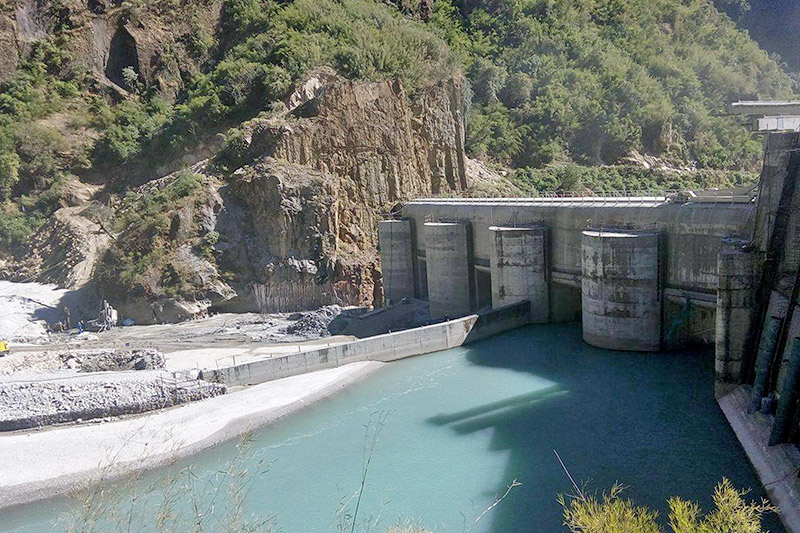Upper Tamakoshi hydropower project successfully tests dam
Kathmandu, March 22
With an aim to meet the latest completion deadline of July 15, the 456-megawatt Upper Tamakoshi Hydropower Project (UTHP) has completed the necessary tests of its dam, headworks, descender and semi-reservoir today.
A team of high-level governmental officials, including Minister for Energy, Water Resources and Irrigation Barsha Man Pun, member of National Planning Commission Krishna Prasad Oli, managing director of Nepal Electricity Authority Kul Man Ghising and other officials witnessed the technical tests of the project.
The project has constructed a 22-metre-high and 60-metre-wide dam. It had started filling the reservoir with water from Monday and the final test of the dam was done today.
Minister Pun has directed the project officials to complete the project within the stipulated timeline by utilising necessary resources.
Ghising, meanwhile, said that they are committed to completing the project within the deadline at any cost. He said that the project developer had accelerated construction activities significantly to disprove the widespread rumour that the project was going to miss its completion deadline yet again.
He further said that the global pandemic coronavirus will not affect the project as they have already completed 99.3 per cent of physical works so far.
As of now, Texmaco Railway Engineering of India, which is responsible for installing penstock pipes along 373 metres of the vertical tunnel has installed pipes along 145 metres of the tunnel. Similarly, Andritz Hydro, an Austria-based contractor, which is responsible for installing penstock pipes along 310 metres of the tunnel, has completed installing 250 metres of pipes so far.
This means a total of 395 metres of penstock pipes have been installed in the tunnel out of the total length of 683 metres of the vertical tunnel.
Considering the slow pace of work, Andritz Hydro was brought in, in January of last year to take on part of works related to installing the penstock pipes.
In accordance with the revised deadline, which was extended for the fourth time in November, the project is scheduled to produce 76 megawatts of power from the first unit of its six units by mid-July.






